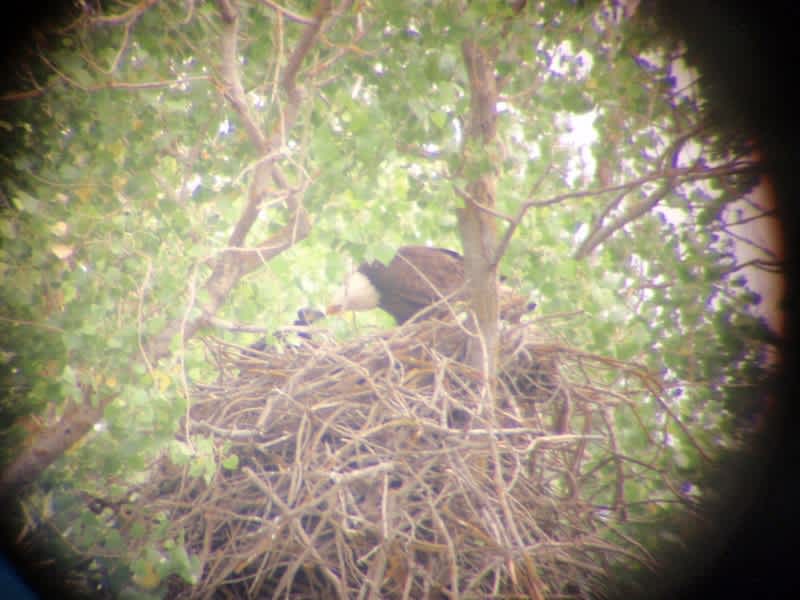First Successful Bald Eagle Nesting at Sacramento National Wildlife Refuge
OutdoorHub 07.06.12

On July 1, 2012, a bald eagle at the Sacramento National Wildlife Refuge (Refuge) took his first flight. This is a momentous occasion, since this is the first bald eagle to ever be born on the Refuge. Bald eagles are a common sight on the Refuge during the winter when eagles from northern states and Canada congregate in the Central Valley to feast on the abundance of waterfowl. However during the summer, breeding bald eagles are not typically found in the Sacramento Valley this far from rivers. Overall, they tend to be close to lakes, rivers, or the ocean.
The bald eagle was placed on the endangered species list in 1967 due to nesting failure due to contaminants such as lead and DDT. DDT was a common pesticide used to control mosquitos and other insects and caused thinning of the egg shell in many raptors. The banning of DDT in 1972 and reintroduction across the United States has allowed the bald eagle to increase its numbers. In 2007, the U.S. Fish & Wildlife Service removed the bald eagle from the federal endangered and threatened species list. However, California continues to list the bald eagle as endangered.
The Refuge adult male and female bald eagles began building a nest in 2011 but it was blown out of the tree during heavy winds. This winter, they tried again in a section of the Refuge closed to the public. Bald eagles will typically lay one to two eggs. Refuge staff have been watching the nest carefully and have only seen the one young male. In eagles, the males are smaller than females. Currently, the fledgling is 11 weeks old and staying close to the nest. Over the next several weeks, he will stay with mom and dad as he learns how and where to hunt. The Refuge’s managed wetlands provide a variety of prey items for the bald eagle including ducks, geese, and mammals.
While winter provides great opportunities to watch flocks of geese, visiting the Refuge any time of year provides a variety of opportunities to view the diversity of wildlife that utilizes the wetland habitats. Currently, visitors have the opportunity to catch glimpses of the young bald eagle along the 6-mile auto tour or the viewing platform. This summer, the adult eagles have been seen hunting American coots and carp on the auto tour.

